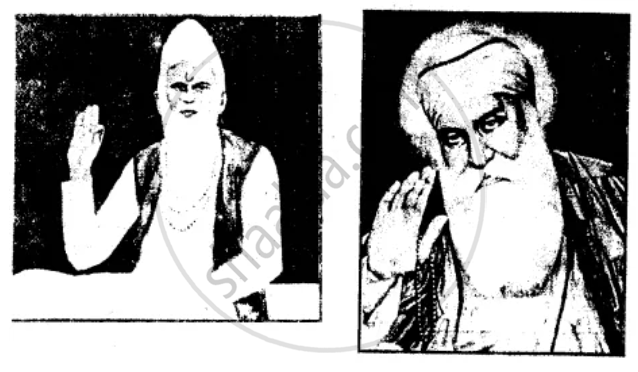Advertisements
Advertisements
Question
Explain the sources of reconstructing religion thoughts and ideas leading to the growth of Composite Culture with reference to:
Guru Granth Sahib and Guru Nanak Dev’s teachings
Solution
Guru Granth Sahib is the only scripture of its kind which contains the songs, hymns, and utterances of a wide variety of saints, sages, and bards. This shows that Guru Arjan Dev wanted to affirm the fundamental unity of all religions and the unitary character of all mystic experience. It is indeed, a magnificent compendium of religions, mystic and metaphysical poetry written or uttered between the 12th and the 17th century in different parts of India. It is, also, at the same time, a mirror of the sociological, economic, and political conditions of those days. Guru Granth Sahib is regarded by the Sikhs as a ‘Living Guru’ and as a spiritual guide not only for them but for the entire humanity. They regard it as a ‘Living Guru’ that has all the answers regarding religion and morality. The philosophy embodied in Guru Granth Sahib is that of action, deed, and consequence. It lays emphasis on shared communal experience and the extinction of the ego or self is the corner-stone of its philosophy. It regards God as omnipotent and omniscient. Guru Nanak Dev’s teachings: Guru Nanak preached the gospel of Universal Brotherhood and religious tolerance. He exhorted the Hindus and the Muslims to forget their differences because he believed in the equality of all religions.
APPEARS IN
RELATED QUESTIONS
Who sought the Raja’s permission to build a fort at Kochi?
Name the two Indian motifs used in Islamic architecture in India.
What were the factors that led to the emergence of composite culture during the Mughal Age?
With reference to the given pictures, answer the following:

Mention any two teachings of each of these two saints.
Who was St. Francis Assisi?
Why did Francis Xavier seek an audience with the King of Travancore?
Write short note on Kabir.
Write short note on Mirabai.
Explain the contribution of the Mughal dynasty to the development of Indo-Islamic culture.
Explain the rise and growth of the Sufi-Movement in India with reference to:
The Suhrawardi Order
